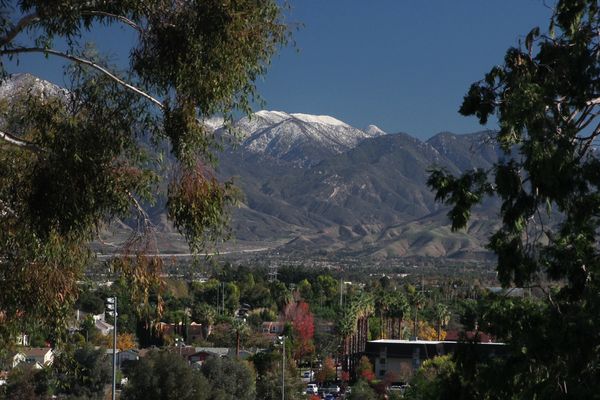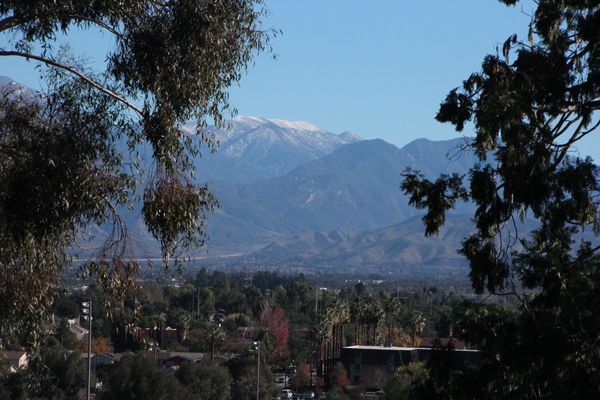What a polarizer does
Dec 25, 2014 14:38:04 #
Fogman
Loc: Fields Landing, California
Not a comment, just a little education. 90* = 90°. That is, depress your alt key, go the 10key side of your keyboard and punch in 0176 while the alt key is still depressed. You can find most of the alt codes here: http://www.codetable.net/altkeycodes. Have fun. Hope you have happy holidays.
Dec 25, 2014 15:16:12 #
lighthouse
Loc: No Fixed Abode
dlmorris wrote:
The two shots were taken about 30 seconds apart, just long enough for me to turn the filter from one setting to the other. When the conditions are right, the difference can be dramatic.
I know what a polariser does and that the results can be dramatic.
But I do not think that the difference we are seeing here is solely due to the polariser.
To me it very much looks as if the light has changed as well.
It looks to me like the less polarised shot has had a hazy cloud pass in front of the sun.
Look at the very foreground bushes, especially on the right hand side, look at the distinction in the light on the town.
Can you post unedited jpgs and mark them "store original"?
Dec 25, 2014 15:44:38 #
dlmorris
Loc: Loma Linda, Ca
Ok, here they are. They were taken withen one minute of each other. Camera was hand held. Hopefully you can download...
Dec 25, 2014 16:31:31 #
lighthouse
Loc: No Fixed Abode
dlmorris wrote:
Ok, here they are. They were taken withen one minute of each other. Camera was hand held. Hopefully you can download...
You stripped out your exif data?
Dec 25, 2014 16:45:58 #
Dec 25, 2014 23:38:52 #
This is sort-of a side question. Short of me looking it up, what makes a circular polarizer more effecient on a digital sensor?
Dec 26, 2014 10:15:38 #
dlmorris wrote:
Here are two shots taken from the same place, one with the polarizer rotated one way, the other with it rotated 90* the other way. I should have taken a shot without any polarization at all, but you think of such things later..... Anyway, I thought it would make an interesting comparison...
Great comparison! Thanks for sharing! :thumbup:
Dec 26, 2014 11:08:34 #
Dec 29, 2014 03:12:13 #
wdross
Loc: Castle Rock, Colorado
dlmorris wrote:
Here are two shots taken from the same place, one with the polarizer rotated one way, the other with it rotated 90* the other way. I should have taken a shot without any polarization at all, but you think of such things later..... Anyway, I thought it would make an interesting comparison...
I know I am coming in late on the subject, but your shots are a classic example of polarization and its affects. What is interesting about polarization is that it can both increase or decrease the contrast of a scene depending on the specular highlights and the overall dynamic range. When the two filter parts are in line with each other, there is little to no polarizing effect other than slight neutral density. That would be your first shot. Once the two filter part have the lines rotated 90 degrees to each other, max polarization occurs and most specular highlights and reflected light is reduced or nearly eliminated. That is how a linear polarizer works. With a circular polarizer, the first part of the filter is the same as the linear polarizer, but the second part does not use lines to create the polarized effect. It use a rotational property of light for the polarization and, hence, the term circular polarization. There are both books and sites that can give better and more detailed descriptions of polarization than what I have given here.
In your case, it appears that your scene's dynamic range was high due to specular highlights and most of the rest of the range was in the bottom half of the histogram. Your polarization took away most of the reflected light and specular highlights. Therefore, your overall dynamic range decreased and your sensor could capture the lower dynamic range better. For a lot of other scenes when the sky with clouds plays a large part, a polarizer will darken the sky and will actually increase the overall dynamic range for the scene.
The reason that circular tends to be used today instead of linear is due to optical coatings causing birefringement in optical viewfinders and the effects on autofocus systems.
Also, I really like your second picture. It is a very good scenic of a town at the foot of a mountain.
Dec 29, 2014 09:40:08 #
dlmorris
Loc: Loma Linda, Ca
Thank you Wdross! I don't understand it all, but I do understand the effects! your explanation makes me want to do some more study on the subject. Thanks!
Jan 9, 2015 13:44:34 #
dlmorris wrote:
Here are two shots taken from the same place, one with the polarizer rotated one way, the other with it rotated 90* the other way. I should have taken a shot without any polarization at all, but you think of such things later..... Anyway, I thought it would make an interesting comparison...
Yes your Polarizer did it's job well.
Craig
If you want to reply, then register here. Registration is free and your account is created instantly, so you can post right away.




